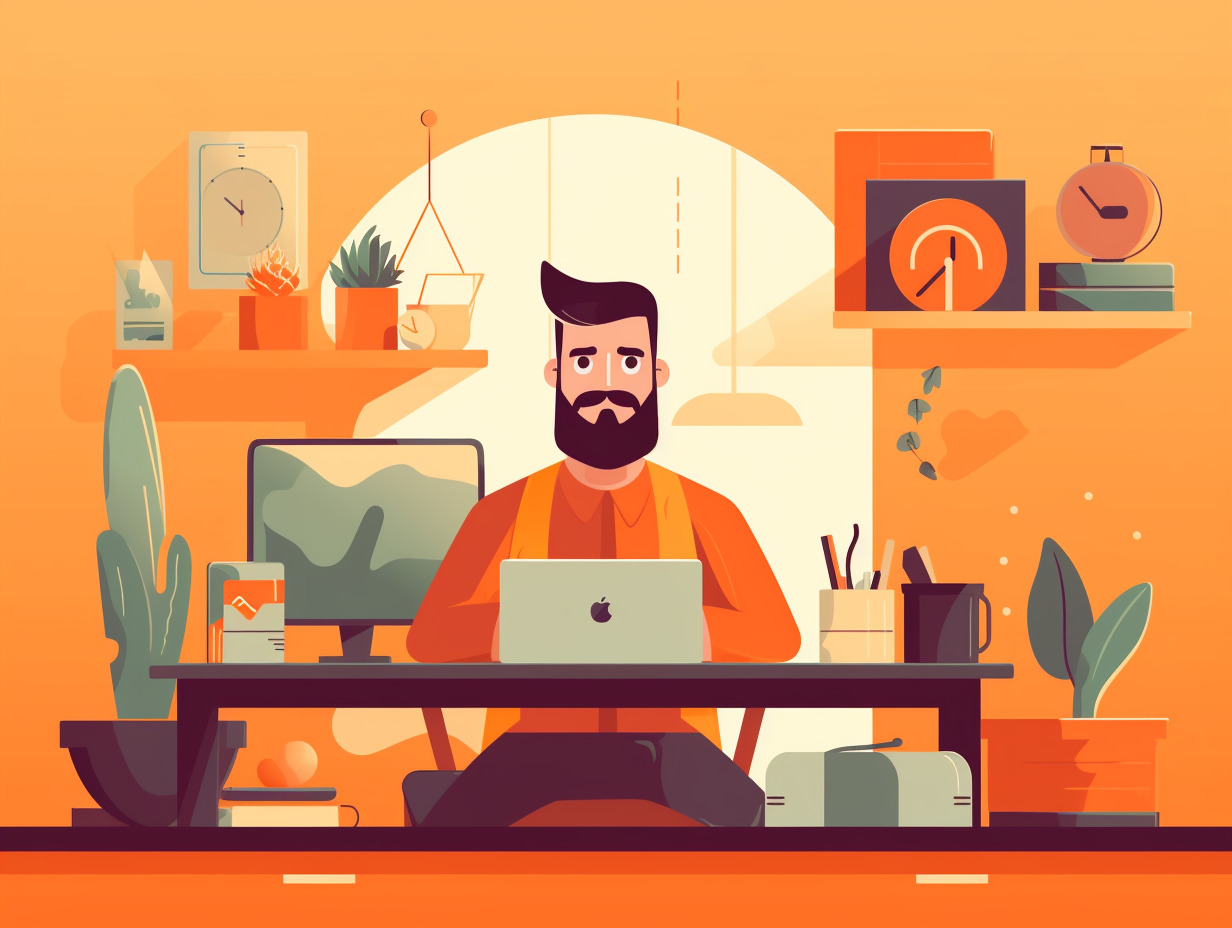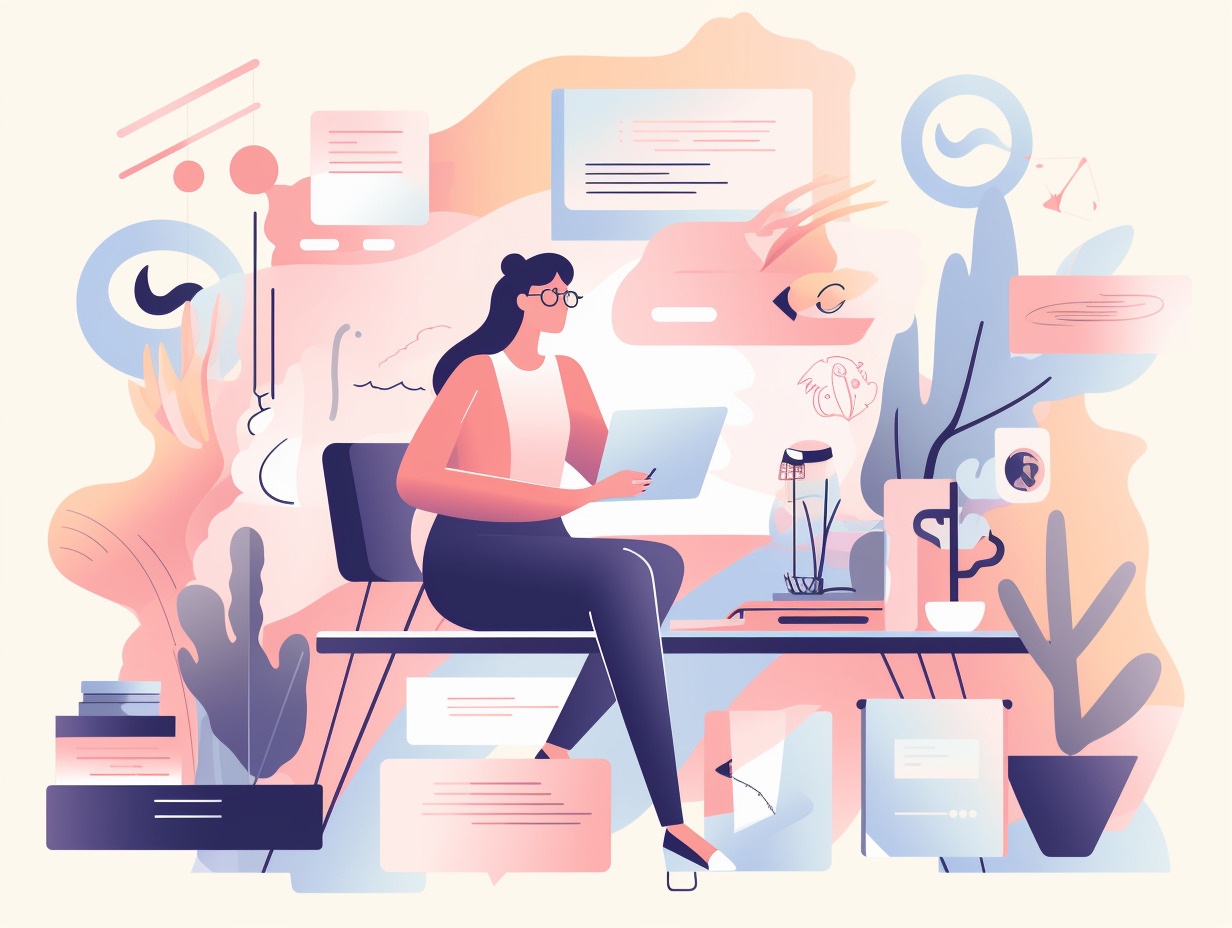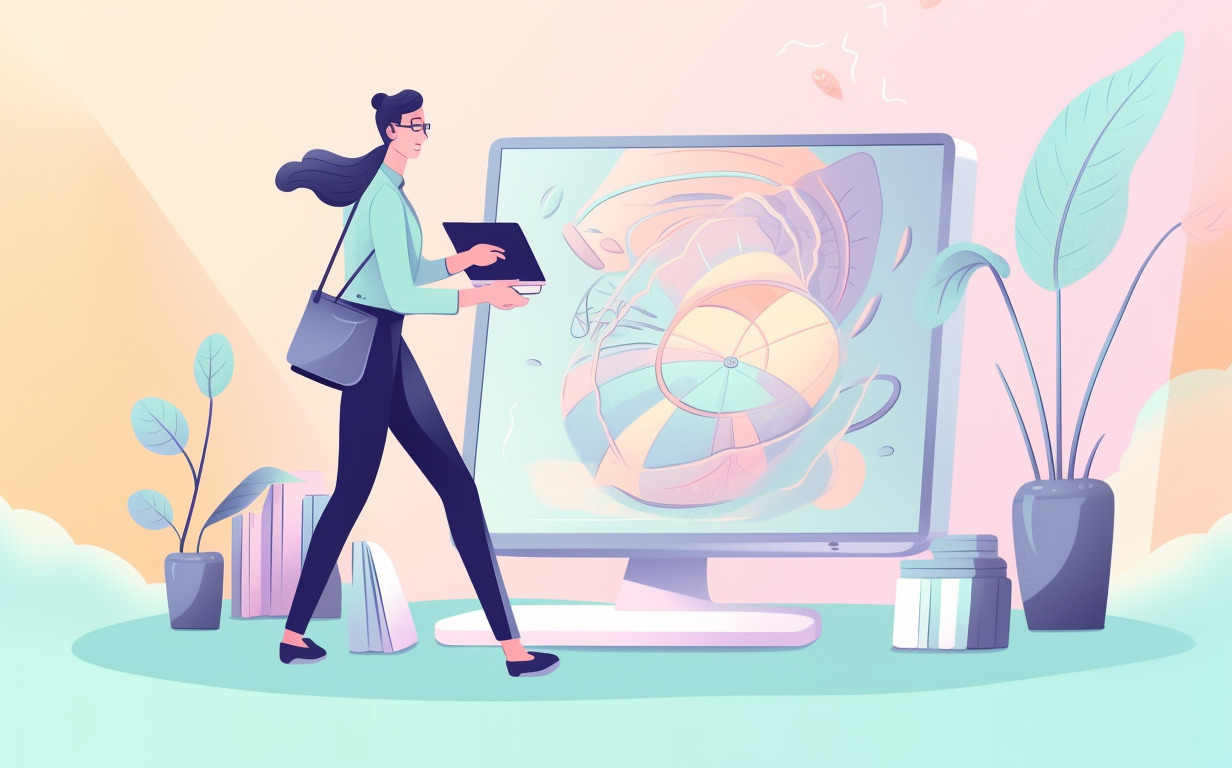
In today’s digital era, the demand for skilled web designers is skyrocketing. Companies and individuals alike are in constant need of professionals who can create stunning websites that captivate audiences and drive business growth. If you’re passionate about design and seeking a flexible and rewarding career, learning how to become a freelance web designer could be the perfect fit for you.
But what exactly does it mean to be a freelance web designer? Well, it means having the freedom to work independently, choose your own projects, and manage your own time. It means being the master of your craft and turning your creative ideas into functional and visually appealing websites. And the best part?
You can do it all from the comfort of your own workspace, be it a cozy coffee shop or your favorite corner at home.
Now, let’s explore some of the benefits and advantages that come with this exciting career path. First and foremost, freelancing allows you to break free from the constraints of a traditional office job. Say goodbye to commuting, rigid schedules, and endless meetings. As a freelance web designer, you have the freedom to work whenever and wherever you please, giving you the flexibility to live life on your own terms.
Another advantage is the potential for higher earnings. By working independently, you can set your own rates based on your skills, experience, and the value you bring to your clients. As you gain more expertise and build a solid reputation, you’ll have the opportunity to increase your rates and enjoy the financial rewards that come with it.
Moreover, freelance web design offers a variety of projects to work on, allowing you to constantly challenge yourself and expand your skill set. From designing sleek corporate websites to creating engaging e-commerce platforms or crafting personalized portfolios for individuals, the diversity of projects keeps your work fresh and exciting.
Additionally, freelancing fosters personal and professional growth. You’ll have the opportunity to collaborate with clients from different industries, which not only broadens your horizons but also helps you sharpen your communication and problem-solving skills. Each project becomes a valuable learning experience, enabling you to stay up-to-date with the latest design trends and technologies.
Understanding the Role of a Freelance Web Designer
As a freelance web designer, your main responsibility is to bring your clients’ visions to life by creating visually appealing and functional websites. This requires a combination of technical expertise and creative flair. Here are some key responsibilities and skills that you should focus on:
1- Proficient in web design fundamentals: Master the building blocks of the web, such as HTML, CSS, and JavaScript. These languages form the foundation of any website and are essential for creating responsive layouts, styling elements, and adding interactivity.
2- Eye for design and aesthetics: Develop a keen sense of design principles, including color theory, typography, and layout composition. Your ability to create visually harmonious websites will leave a lasting impact on your clients and their users.
3- User experience (UX) and user interface (UI) design: Understand how users interact with websites and design intuitive and user-friendly interfaces. UX/UI design focuses on enhancing the usability, accessibility, and overall satisfaction of the end-users.
4- Graphic design skills: Familiarize yourself with graphic design tools like Adobe Photoshop and Illustrator. These tools will enable you to create captivating visuals, logos, icons, and other graphic elements that enhance the overall aesthetics of a website.
5- Responsive and mobile-first design: With the increasing use of mobile devices, it’s crucial to create websites that are responsive and provide seamless user experiences across various screen sizes and devices.
One of the exciting aspects of being a freelance web designer is the wide range of opportunities available. From working with startups and small businesses to collaborating with established companies and agencies, your potential clients are diverse and plentiful.
Start by identifying your target market. Consider the industries or niches you are passionate about or have experience in. For example, you might specialize in designing websites for e-commerce businesses, creative agencies, or personal brands. Understanding your target market will help you tailor your services and marketing efforts effectively.
Networking and building connections within the industry can also lead to promising opportunities. Attend industry events, join web design communities, and engage with fellow professionals on social media platforms like LinkedIn or Twitter. Your connections can provide valuable referrals and insights into potential clients who are seeking your expertise.
Additionally, consider exploring freelance job platforms and websites such as Upwork, Freelancer, or Fiverr. These platforms connect freelancers with clients actively seeking web design services. While competition can be fierce, showcasing your unique skills, portfolio, and providing excellent client service will set you apart from the rest.
Building a Strong Portfolio
Your portfolio is your ticket to success as a freelance web designer. It showcases your skills, creativity, and expertise to potential clients. Let’s explore how you can build a strong portfolio that captivates and impresses.
Start by curating your portfolio with your best and most relevant projects. Choose websites that highlight your diverse skills and demonstrate your ability to create visually stunning and functional designs. Aim for quality over quantity. It’s better to showcase a few outstanding projects rather than overwhelming potential clients with a long list of mediocre ones.
When selecting your work, consider the goals and requirements of each project. Showcase a variety of websites that cater to different industries or purposes. For example, include an e-commerce site, a corporate website, and a portfolio site to demonstrate your versatility. Highlight any unique or innovative features you implemented to make your projects stand out.
Your portfolio website should reflect your professionalism and creativity. Design it in a way that showcases your own unique style while also making it easy for potential clients to navigate and view your work. Keep the design clean, visually appealing, and consistent throughout.
Pay attention to the user experience of your portfolio website. Ensure that it is easy to navigate, with clear labels and intuitive navigation menus. Showcase your work with high-quality images or interactive elements to engage visitors and give them a sense of your design capabilities.
Don’t forget to include an “About Me” page where you can introduce yourself and provide some background information about your experience and expertise. This helps potential clients connect with you on a personal level and understand your passion for web design.
Clients have diverse needs, so it’s important to tailor your portfolio to showcase the specific types of projects you want to attract. If you’re targeting e-commerce clients, include examples of e-commerce websites you’ve designed, emphasizing your understanding of conversion optimization and user experience in an online shopping environment.
On the other hand, if you’re interested in working with creative agencies, highlight projects that showcase your ability to create visually stunning and innovative designs. Be sure to demonstrate your understanding of branding, typography, and visual storytelling.
Consider adding case studies or project descriptions to provide context for each piece in your portfolio. Explain the challenges you faced, the design decisions you made, and the positive outcomes you achieved. This helps potential clients understand your design process and the value you can bring to their projects.

Professional Development
As a freelance web designer, it’s crucial to stay ahead of the curve and continuously enhance your professional development. By keeping up with new design trends and technologies, networking with industry professionals, attending conferences and workshops, and seeking feedback from past experiences, you can thrive in the ever-evolving field of web design.
Web design is a dynamic field, with trends and technologies constantly evolving. Stay informed about the latest design trends, such as minimalism, bold typography, or immersive storytelling. Explore new technologies like responsive design frameworks, content management systems, or front-end development tools.
Follow influential design blogs, subscribe to industry newsletters, and engage in online communities to stay up to date. Experiment with new techniques and incorporate them into your work when appropriate. By staying current, you’ll be able to offer clients fresh and innovative solutions.
Networking is a powerful tool for professional growth. Connect with fellow web designers, developers, and professionals in related fields. Engage in online communities, join design forums, and participate in social media discussions. LinkedIn and Twitter can be valuable platforms to connect with industry leaders and potential clients.
Networking not only allows you to learn from others’ experiences and gain insights into industry trends, but it also opens doors to collaboration and referrals. Building strong professional relationships can lead to exciting opportunities and expand your reach as a freelance web designer.
Conferences, workshops, and webinars provide excellent opportunities to learn from industry experts and gain hands-on experience. Attend local or international conferences specifically focused on web design, UX/UI, or front-end development. These events often feature renowned speakers, practical workshops, and networking sessions.
Participating in webinars or online workshops allows you to learn from the comfort of your own workspace. Take advantage of these online resources to delve into specific topics, acquire new skills, and stay updated on emerging technologies.
Feedback is invaluable for personal and professional growth. Seek constructive criticism from clients, colleagues, and even friends and family. Embrace feedback as an opportunity to learn, improve, and refine your skills. Actively listen to clients’ preferences and suggestions, and adapt your designs accordingly.
Reflect on past projects and experiences to identify areas where you can improve. Evaluate what worked well and what could have been done differently. Learning from your successes and failures will help you refine your design process and become a better freelance web designer.
Establishing a Reliable Workflow
Start by organizing your tasks effectively. Break down each project into manageable chunks and create a detailed timeline. Prioritize tasks based on deadlines, client requirements, and dependencies. By setting clear goals and deadlines, you can stay focused and maintain productivity throughout the project.
Consider using project management methodologies like SuperOkay or Plutio to enhance your task organization. These frameworks help you visualize and track progress, ensuring that you’re always on top of your workload.
Utilize project management and collaboration tools to streamline communication and collaboration with clients and team members. Tools like Trello, Asana, or Basecamp allow you to create task boards, assign responsibilities, track progress, and exchange feedback in a centralized platform.
Client Portal for web designers like SuperOkay, Plutio or CoPilot facilitate seamless collaboration between designers, developers, and clients. These tools enable you to share design mockups, gather feedback, and iterate on designs in real time.
By leveraging the right project management and client portal for web designers, you can ensure effective communication, maintain project transparency, and deliver high-quality work.
As a freelance web designer, it’s crucial to manage your finances, contracts, and invoices efficiently. Keep track of your income and expenses using accounting software or spreadsheets. This will help you monitor your financial health, prepare invoices, and handle taxes effectively.
When working with clients, ensure that you have clear contracts in place. Contracts protect both parties and outline project scope, timelines, deliverables, and payment terms. Consider consulting a legal professional to draft or review your contracts, ensuring they are comprehensive and legally binding.
Use professional invoicing tools like FreshBooks, QuickBooks, or PayPal to create and send invoices to clients. Clearly outline the scope of work, payment terms, and accepted payment methods to avoid any misunderstandings.
Conclusion
As you embark on your journey as a freelance web designer, remember to stay curious, adaptable, and passionate about your craft. Keep learning, exploring new design trends, and staying updated with the latest technologies. Network with like-minded professionals, collaborate with others, and seek feedback to fuel your growth. Remember, a client portal for web designers like SuperOkay might be a great addition to your toolset.
Don’t be afraid to take calculated risks and step out of your comfort zone. Embrace challenges as opportunities for growth and constantly push the boundaries of your creativity. Be resilient in the face of setbacks, as they are inevitable in any career journey.
Above all, enjoy the process. Freelance web design allows you to express your creativity and make a tangible impact on businesses and individuals. Embrace the freedom, flexibility, and endless possibilities that come with being a freelance web designer.
Are you already using a Client Portal? SuperOkay gives you 1 client portal free forever to start creating professional-looking Client Portals, custom branded to your clients’ brands – Start today by clicking here!
—
Enjoyed the article? Here’s a few others you might like:

Work Life Balance for Freelancers
As a freelancer, it can be easy to blur the lines between work and personal life. Without a traditional office setting and set work hours, it can be tempting to work a…

Professional Development for Freelancers
As a freelancer, it can be easy to focus solely on finding new clients and completing projects. However, it is important to remember that investing in your professiona…

Web Design Portfolio: 5 Tips to Impress Clients
Your web design portfolio is your opportunity to showcase your expertise, creativity, and professionalism to potential clients. It’s key to building trust and wi…

How To Find More Clients (Top 5 Proven Strategies)
As a freelancer, growing your client base is essential to making a living and staying afloat. Fortunately, there are proven strategies freelancers can use to find more…